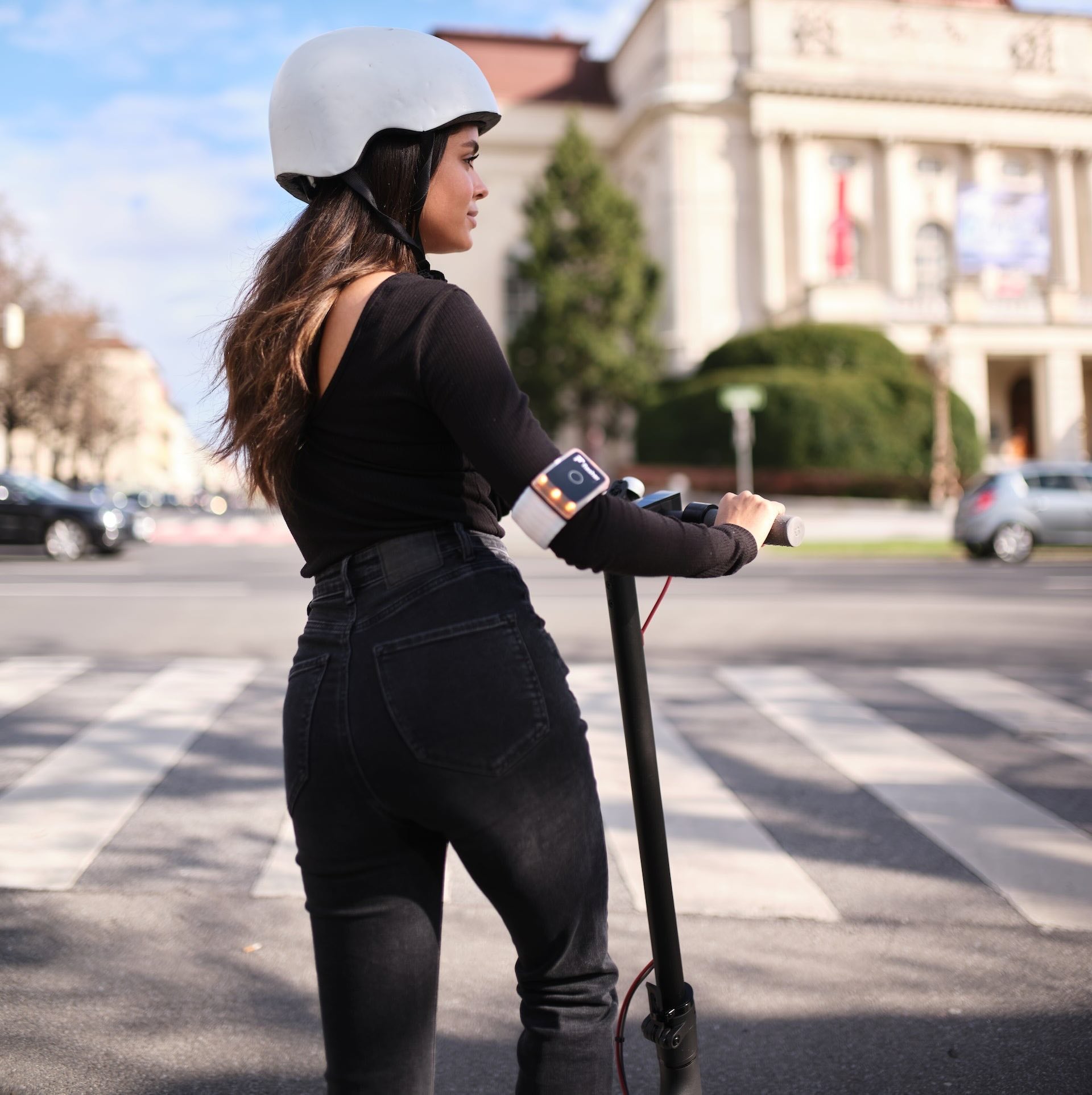
The challenge of flashing helmets
May 1, 2024
Safety and comfort play a very important role, especially on a bicycle. Indicator systems are also becoming increasingly popular on bicycles and in addition to Flasher , the smart indicator bracelet, there are other products that are designed to make it easy and intuitive to use indicators on a bicycle. Indicator helmets in particular are often the first choice when you want to use indicators on a bicycle. But the current designs of indicator helmets often bring with them a number of challenges. Let's take a closer look.
Visibility of flashing helmets
The biggest problem that many drivers complain about is the visibility of the indicators from the front. Since the indicators are attached to the back of the helmet, drivers coming from the front cannot see the turn signal at all. A hood can also easily cover the indicator signal if the wind billows it or blows it away. Flashers, on the other hand, are attached to the arms and cannot simply be covered by clothing.
The helmets are also quite expensive - you sometimes pay extra for the remote control. But that has nothing to do with the helmets themselves, because good, reliable electronics simply have their price.
Change indicator position
If you turn your head to the left to look over your shoulder, for example when turning left, the indicator will move to the right. In the worst case scenario, if visibility is poor, it may look as if you are indicating right when you actually want to turn left. This can have fatal consequences. Since you keep both hands firmly on the handlebars with the flasher, this cannot happen.
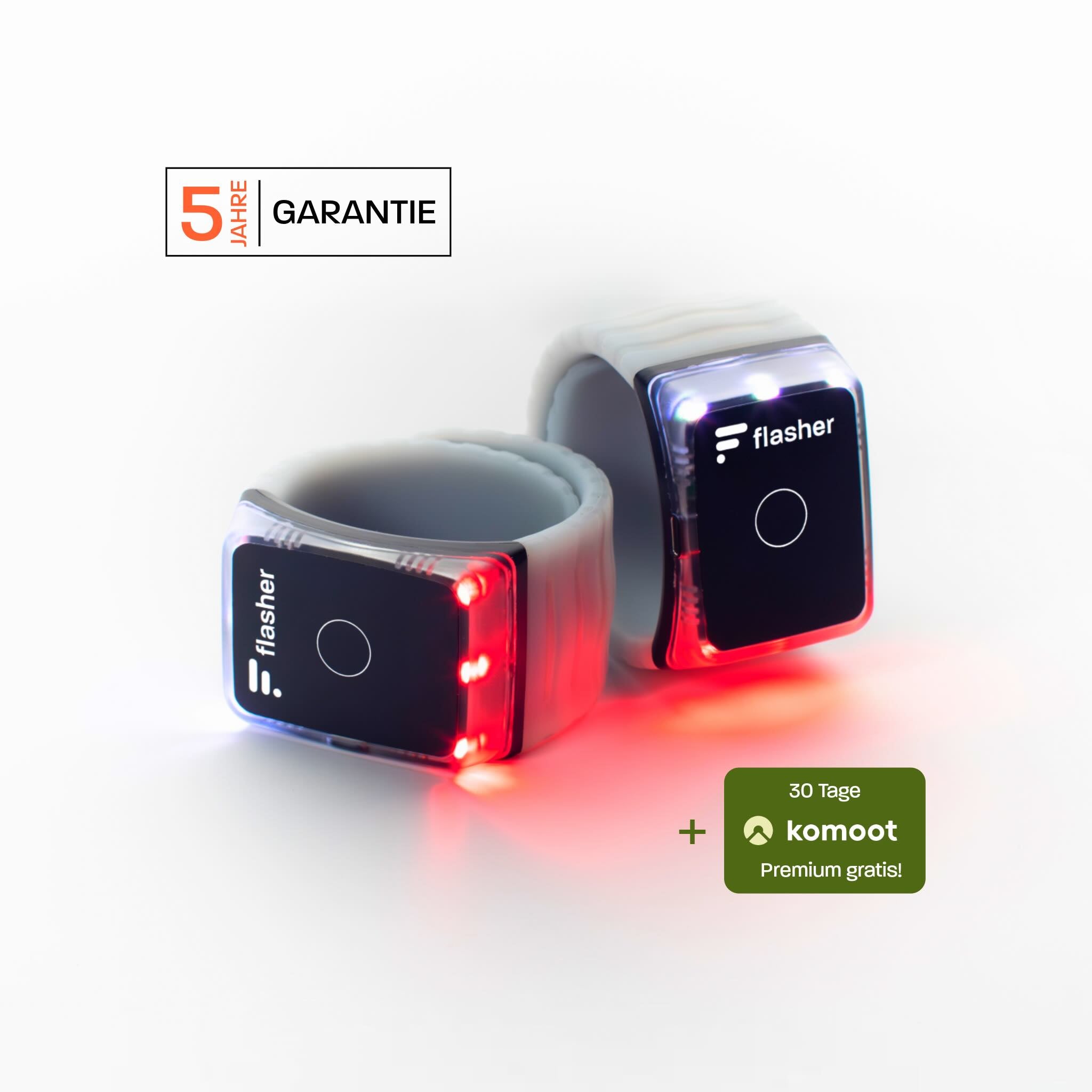
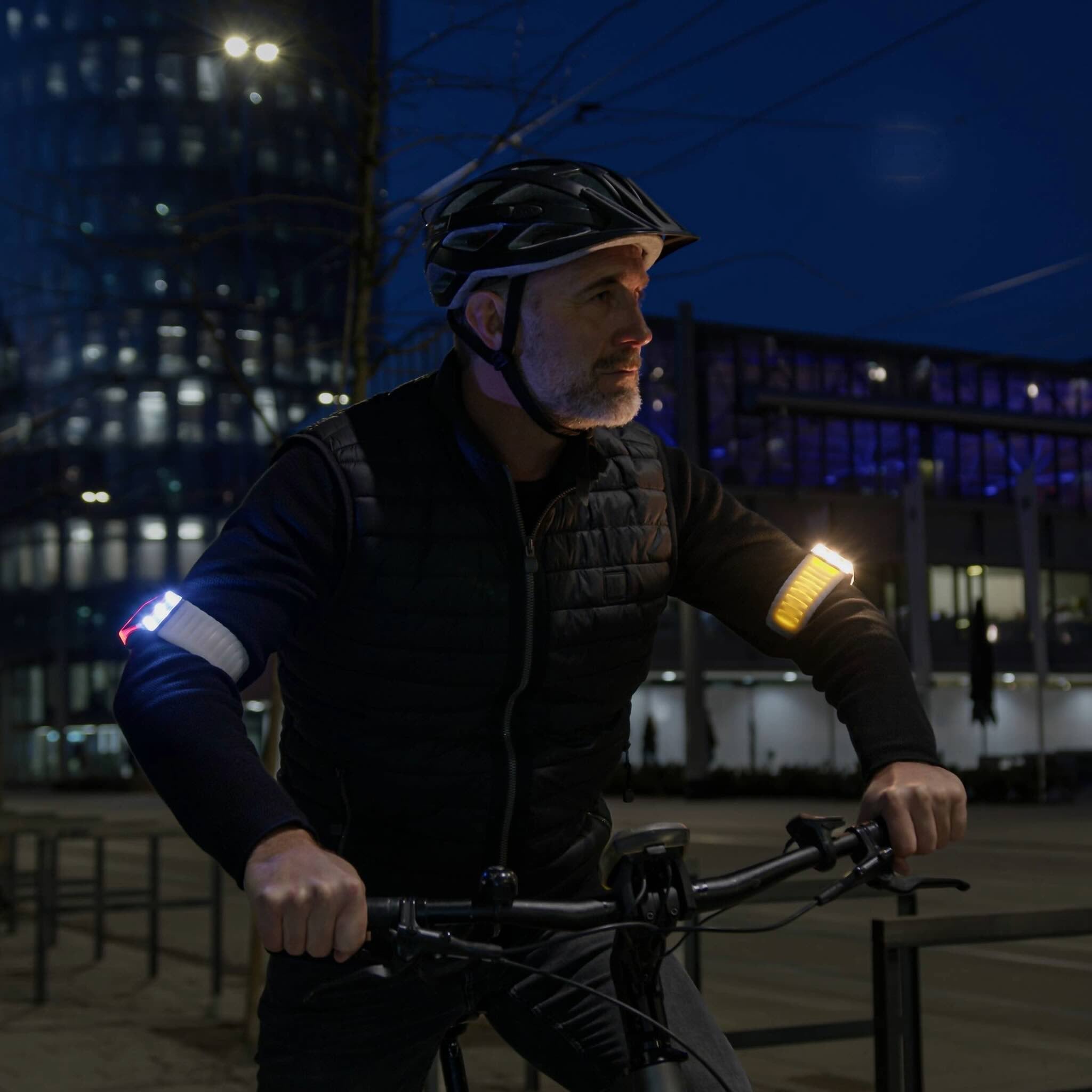
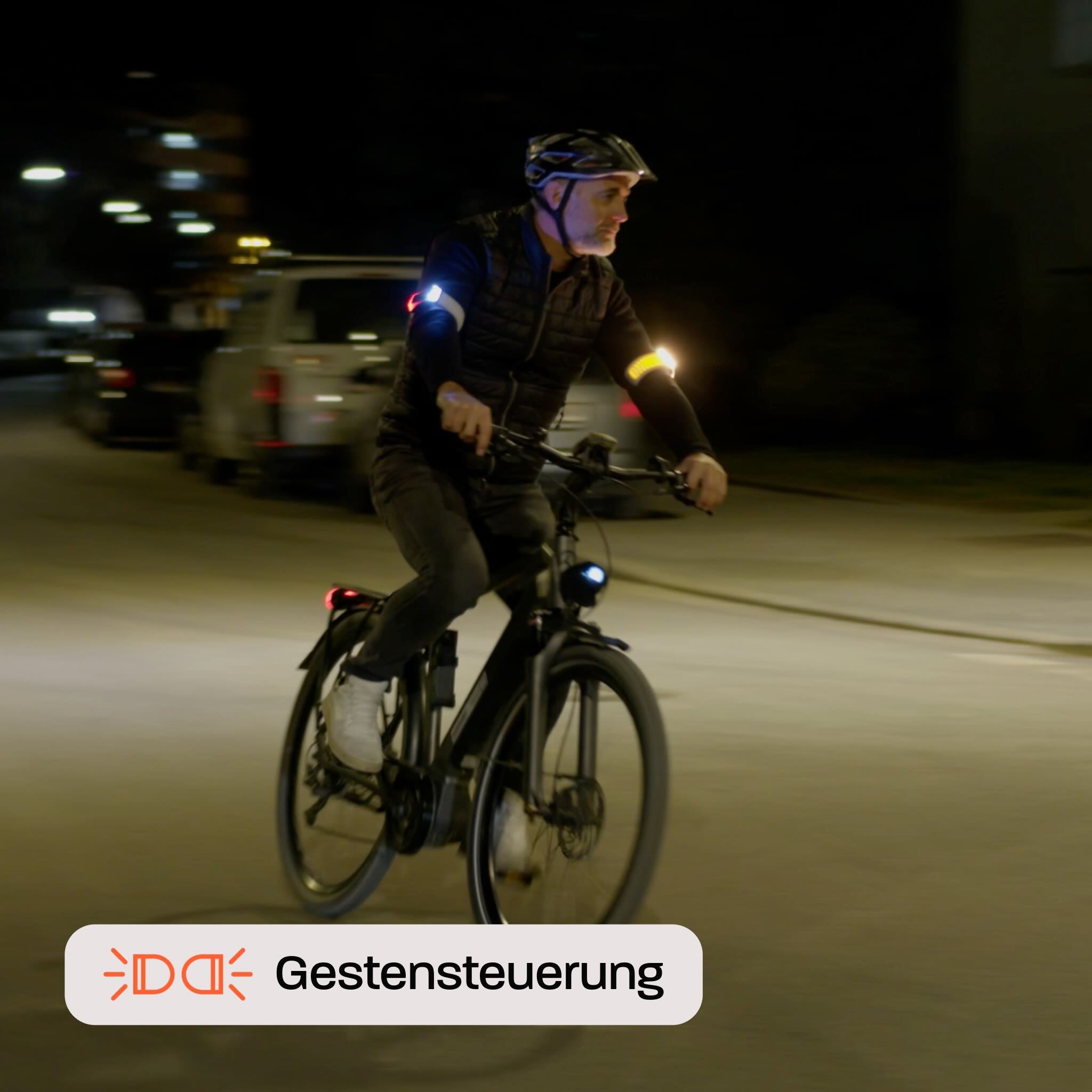
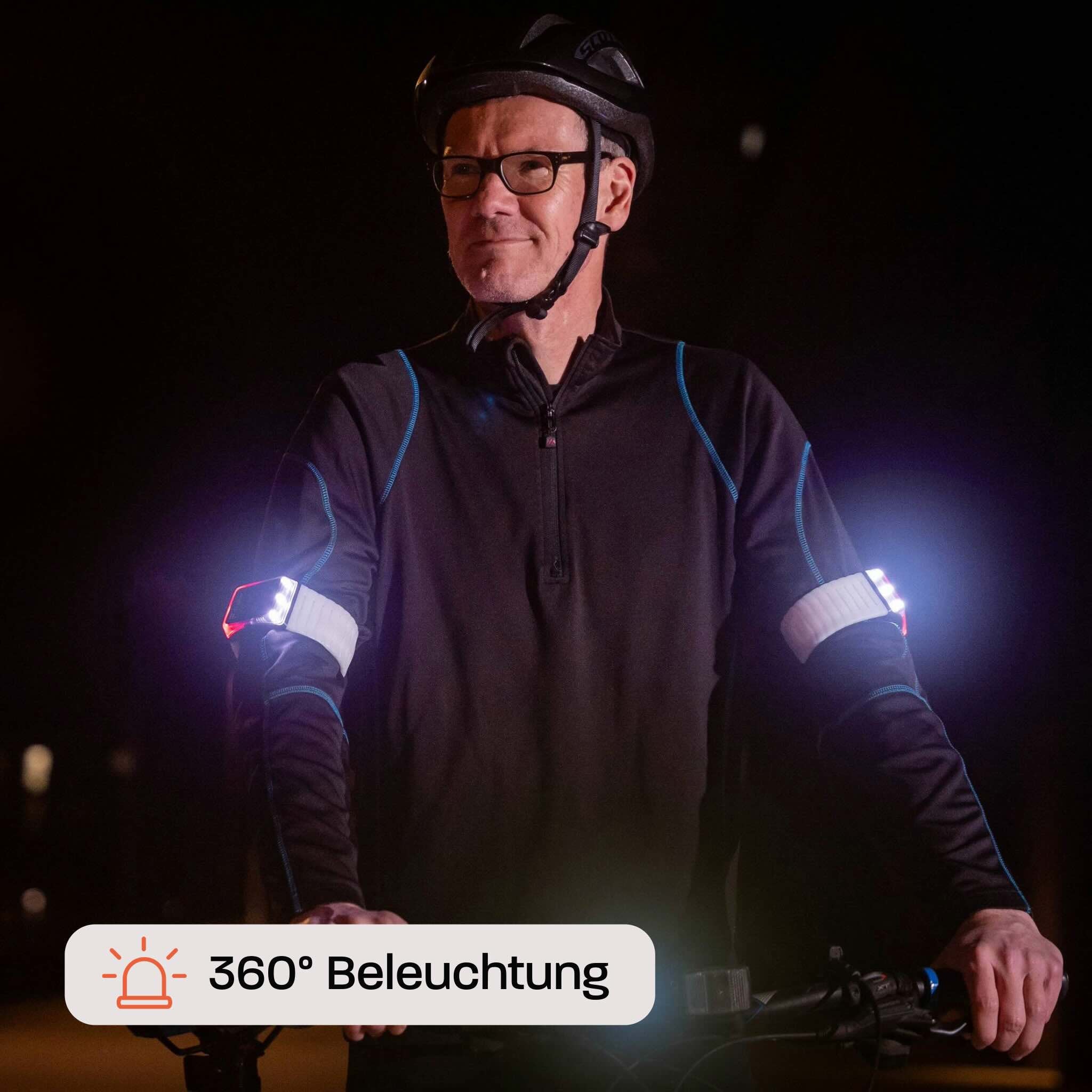
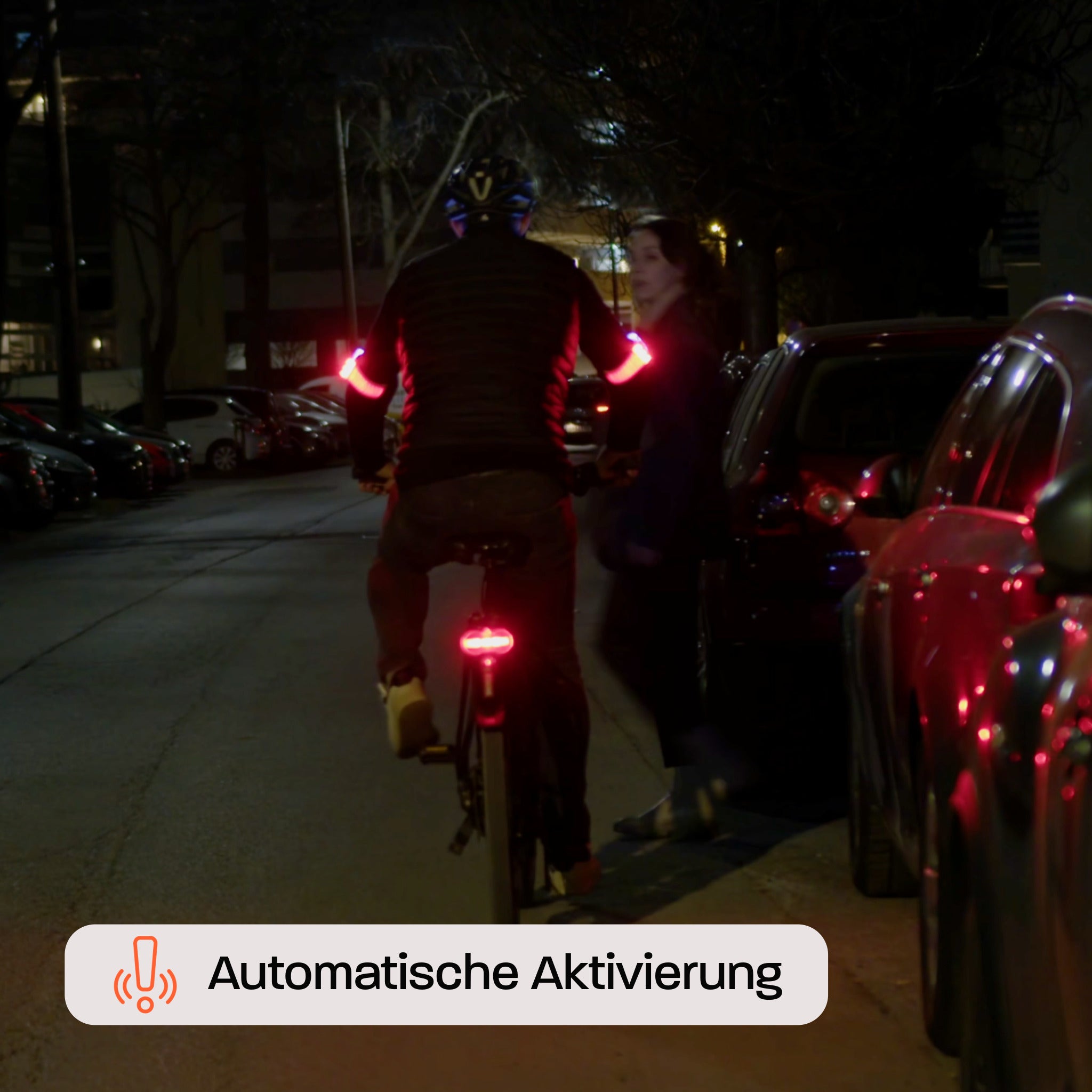

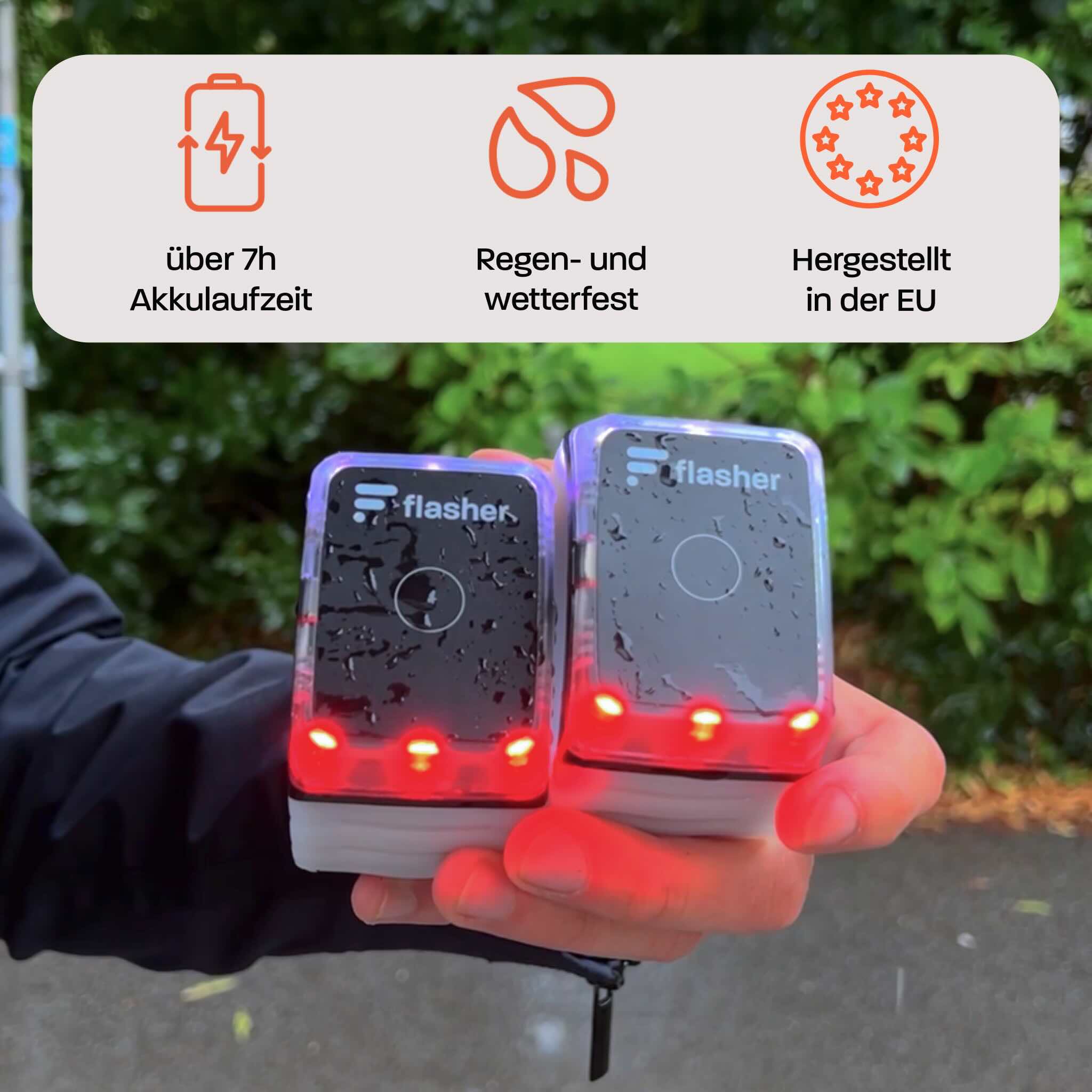
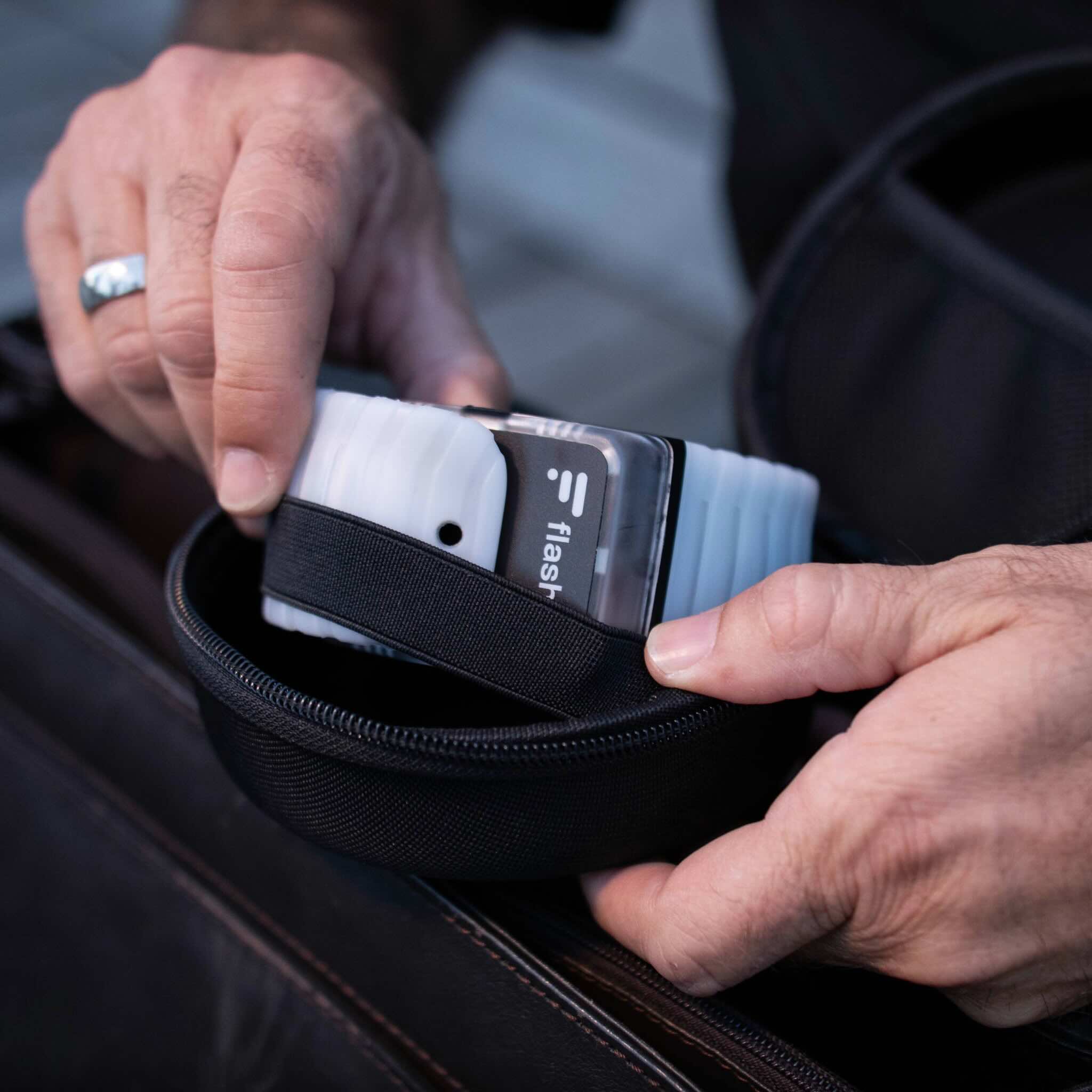
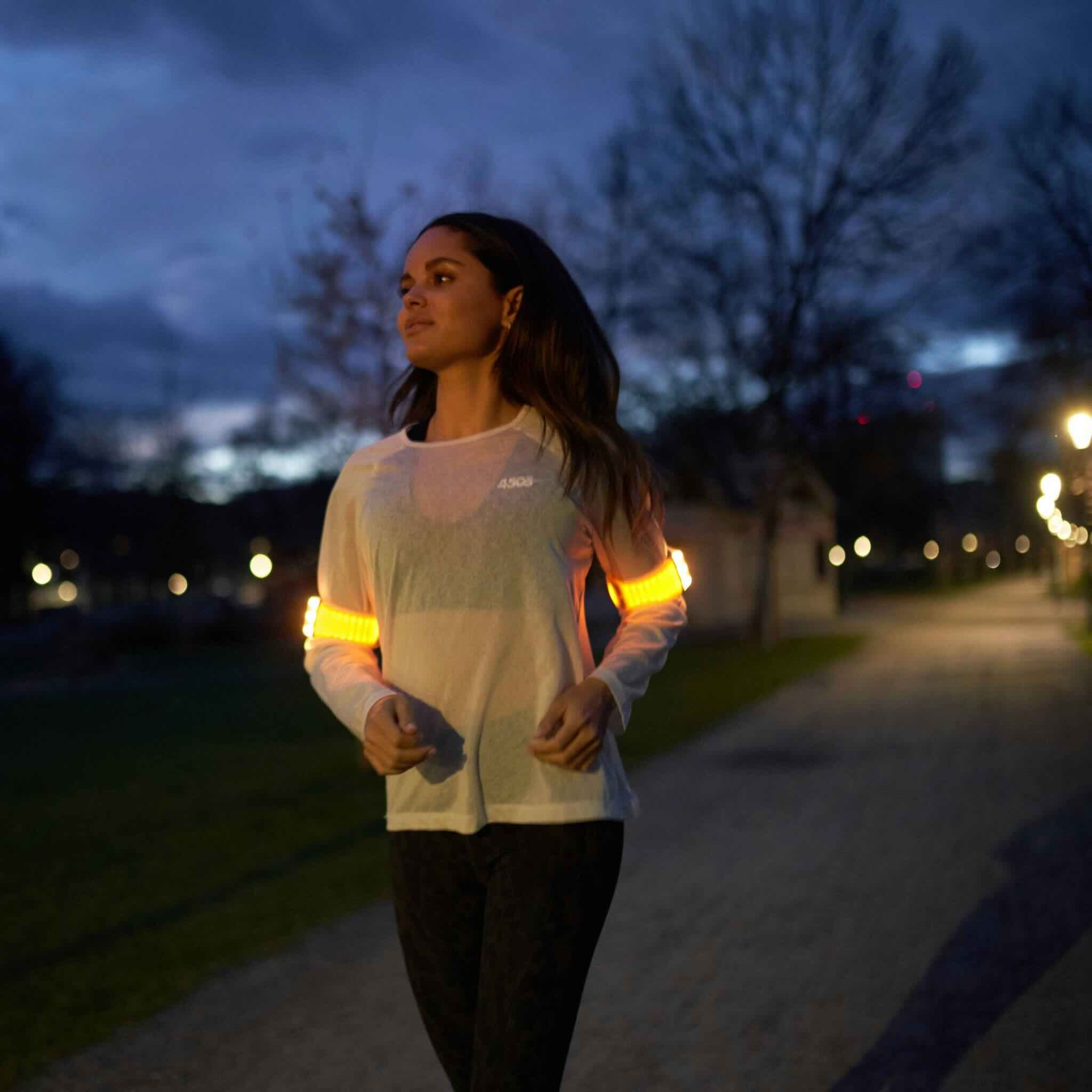
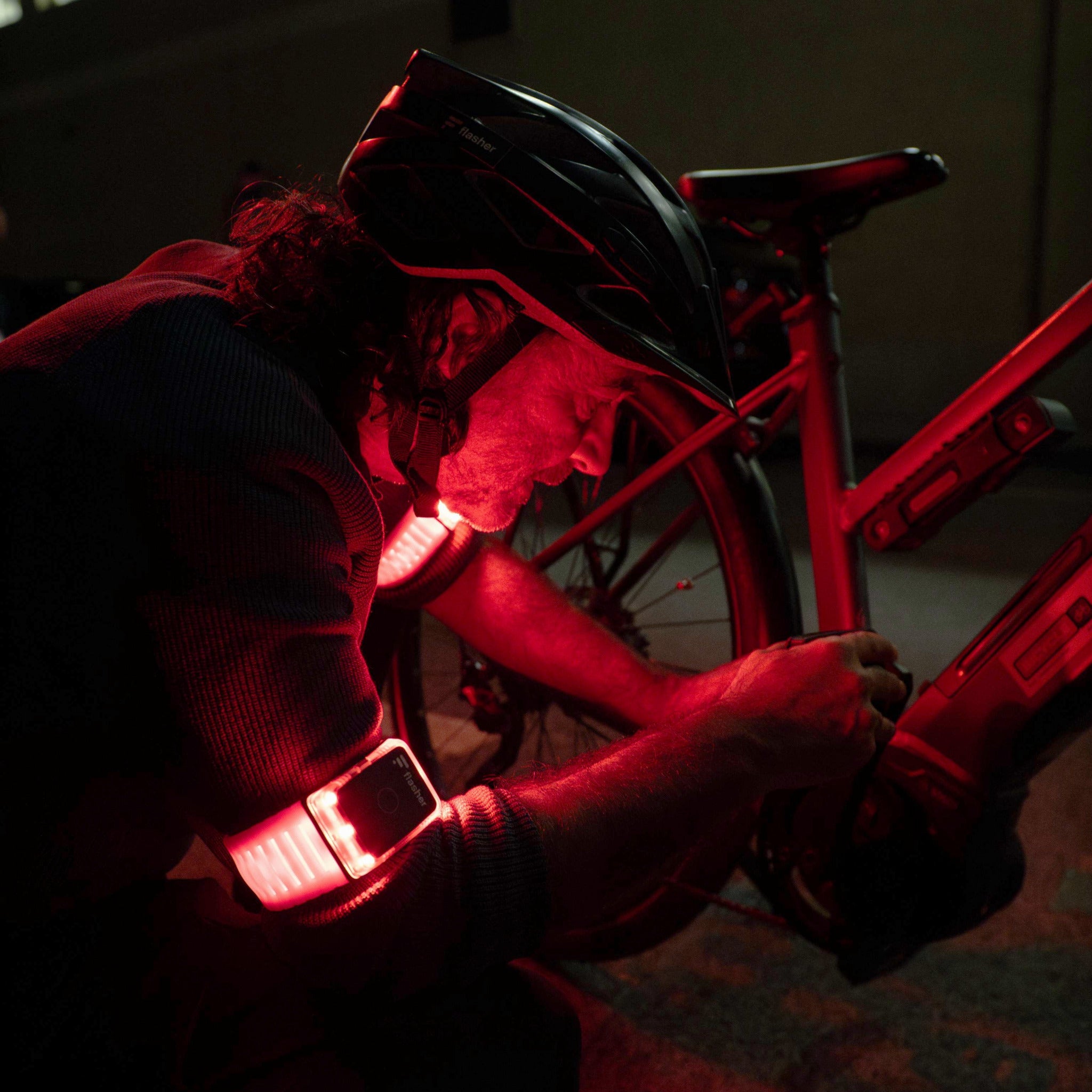
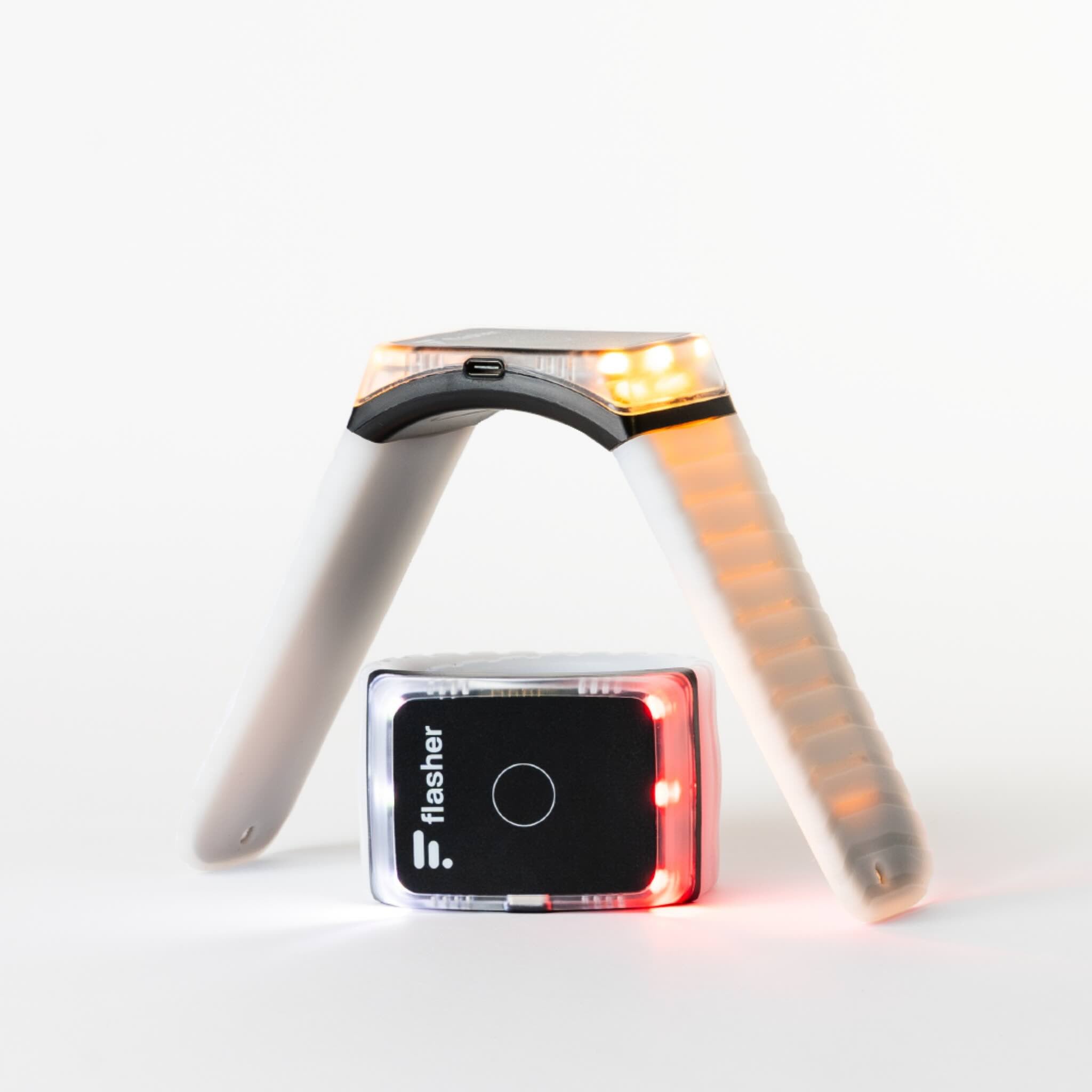
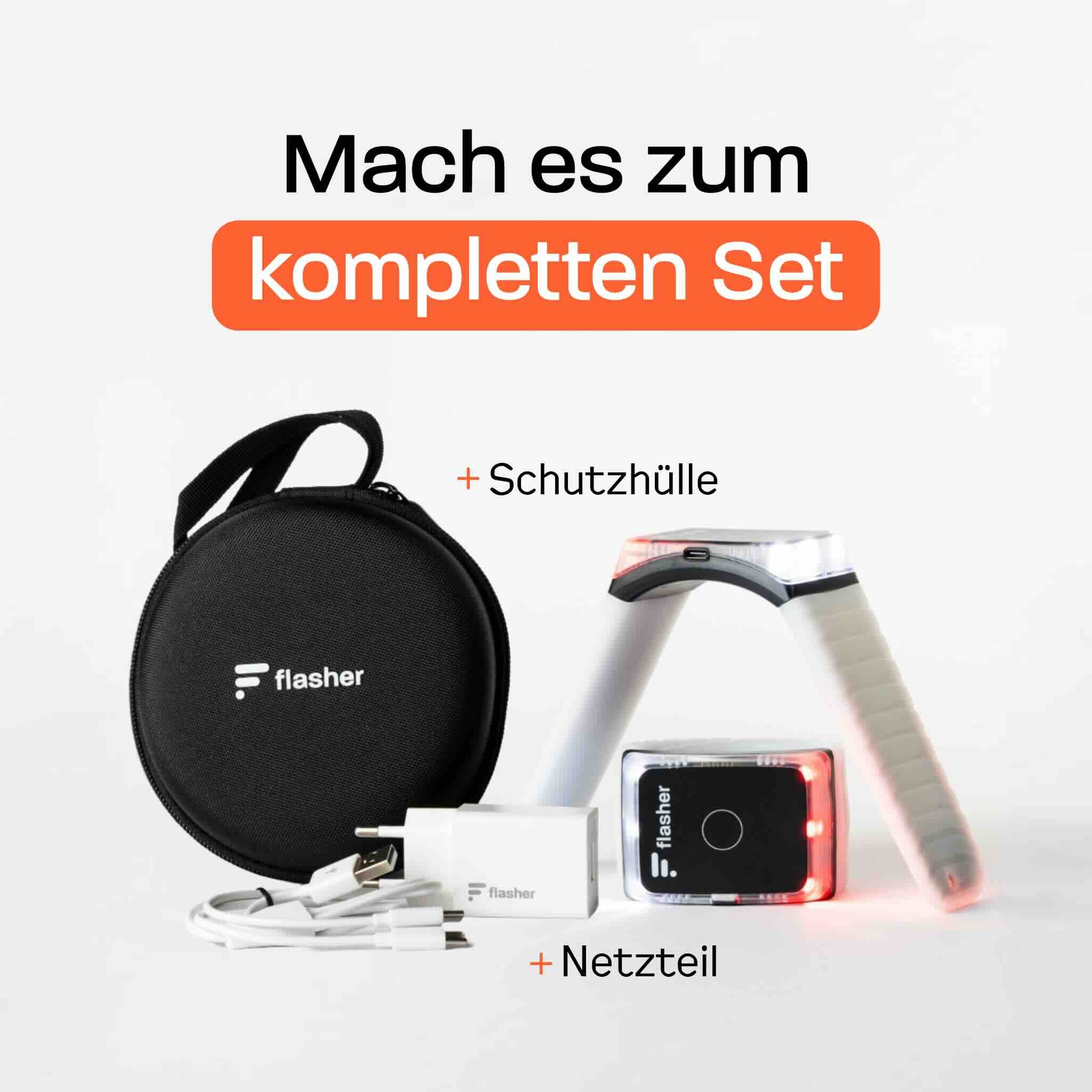
Flasher Duo
The smartest bicycle and e-scooter lights in the world:
- Gesture control turn signal indicators
- 4 modes with ultra-bright 360° LEDs
- Automatic emergency brake lights
- Compliant with road regulations & water-resistant
- Additional features via Flasher app [optional]
Little certainty about helmet status
To make sure that the flashing helmet is actually flashing, you have to look at the controls on the handlebars. An acoustic or haptic signal could help here, but hardly any flashing helmet model has one. You can always see the flasher out of the corner of your eye and know immediately whether you are flashing or pointing ahead. The wristbands also vibrate while they are flashing so that you always know which side is currently active. This would not be possible with a helmet.
Usability of flashing helmets
A common criticism concerns the placement of controls on the handlebars, which can be challenging, especially for riders wearing gloves. Wearing gloves in winter can make it difficult to operate buttons, as fingers become stiff and impair precise control. This also applies to the vehicle-mounted indicators, which are often not easily accessible.
Legal requirements
The legal situation regarding flashing helmets is not entirely clear. Section 54 of the StVZO stipulates a minimum distance between two indicators, at least for cars, and also between the indicator and the rear light. This is important in order to be able to distinguish between the two signals, right and left. Indicators mounted under the bicycle seat also have this problem. In order to maintain the specified distance, they would have to be attached to a rod, which in turn is susceptible to damage. Flashers are attached to the two outermost points of the body, which means that the distance between the indicators is sufficiently large.

Should I use a flashing helmet in traffic?
One thing is clear: indicators increase visibility and stability on a bicycle. A helmet also increases safety in the event of a fall. Indicators in a helmet are therefore better than not using any active lighting on a bicycle or e-bike at all.
However, if you are serious about your safety, flashing helmets are not the best option. They have too many disadvantages that affect functionality in traffic or take concentration away from the road. The fact that the indicator turns with your head when you look over your shoulder is a big problem that you should consider before buying a flashing helmet.





